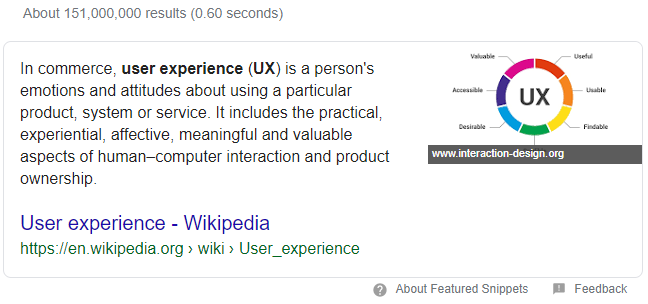It has been predicted that in 2020, Voice Search will be the future of SEO. With voice search being a substantial part of the site, you must understand the basics of Google RankBrain as well as how to optimize your SEO with it. Learning how the tool works and how to implement it on your site will prepare you for the coming of the voice search.
How Google RankBrain Algorithm Works
Before diving right into the use of Google’s RankBrain algorithm to improve your SEO, learn about how it works first to gain an idea of how the tool analyzes queries. Take note, the tool can increase the influence of all users on search results despite the fact that it is a machine learning algorithm. It operates in such a way because it takes and uses direct feedback from the users’ judgment of a site’s quality.
It Analyzes Keywords through User Intent
RankBrain was built to figure out the meaning behind a query you typed in the search engine. Despite the influx of several keywords in a query that Google has never encountered before, the RankBrain tool can take the analysis a notch higher. The tool can connect these keywords to previously analyzed ones. The goal of Google is pretty simple: to provide users with the best search engine experience in the shortest amount of time. This means when a user searches for a query, they instantly get results based on the analysis of RankBrain.
A great example would be searching for “user experience UX”. If you are to think like Google, you should be able to realize the purpose of the query. The results will most likely be a rich snippet of the definition of user experience. With the RankBrain tool, Google was able to provide the most reasonable result for the query.

As you can see, Google was able to provide results within 0.60 seconds. Note that the search engine provided you with results without keyword stuffing or website spamming. This is due to the machine learning RankBrain tool interpreting the search query in a specific way.
Moreover, RankBrain is also capable of providing you with the same results despite the differences in the wording of the query. Let us take the prior example, user experience UX. Different users have varied ways to express their queries. It could be typed in as “UX user experience”, “UX” or “user experience”. You will obtain similar results because RankBrain thinks the queries are essentially looking for one thing and that is the definition of user experience.
It Analyzes User Satisfaction
RankBrain’s efforts do not stop at providing you with results best suited to your query. In addition to analyzing user intent, the tool can also validate your satisfaction based on the results presented. Moreover, it can adjust the results in the future searches you make.
So, how does RankBrain do it? It’s simple. The tool uses user experience signal which determines if you have clicked the top search results and spent plenty of time on the site or if you have hit the back button to look for another result.
In other words, RankBrain is able to analyze if a site consists of content that you have found useful. With this, the tool can give the site a boost so that it appears next time a similar query has been done. Conversely, if you clicked on a site and spent little time on it. RankBrain brings this site down to make way for reliable sites to appear on the top list.
Ranking signals include the following:
- Keyword matching and relevant topics
- Depth of content and freshness
- Engagement of the content
- Diversity of links
- Domain authority
- Anchor text
RankBrain uses historical search data to determine the sites that provide the best results for a query. When it comes to “user experience”, Google knows the pages with the most updated definitions which will most likely obtain higher dwell times. With that, RankBrain will provide you with fresh and in-depth content about “user experience”.
Tips for Optimizing Your SEO with RankBrain Algorithm
Now that you already have a basic idea of how Google RankBrain works, it is time to figure out what it means for your site. Below are some tips for optimizing SEO by pleasing the requirements of the RankBrain tool.
Create Truly Helpful Content
Content is arguably the most important element of any site. Aside from the fact that it is one of the most important ranking factors of Google, users judge your site depending on how informational and useful your content is. RankBrain notices and receives experience signals.
Reinvent Keyword Research
Before you begin creating content with the keywords you have, take a step back and put yourself in the shoes of your potential site visitors. Determine their status in the buyers’ journey. Are they in the awareness, consideration or decision stage?
Awareness is the stage wherein they are asking questions starting with why, what, and how. The consideration is at the stage wherein they have found the answer to their queries. Finally, the decision is the stage to which they decide to act upon the solution to their problem as presented to them by RankBrain.
Another reliable process to learn the user’s intent is to study the related search terms found at the bottom of the SERPs. For “user experience UX”, people also look for courses, principles, and examples. Since RankBrain analyzes synonyms and similar phrasing for particular search queries, it will not yield your site a high ranking for all variations.

Shift Focus to Organic Clickthrough Rate
Learning how to increase your site’s Clickthrough Rate or CTR should be part of your efforts for Google RankBrain SEO. The more users interacting with your site, the higher the CTR. Here are some effective brief notes to guide you in increasing your site’s CTR.
Measure first
Measure everything first so that you will have an idea of a plan to manage it. For a side-by-side comparison, make sure to take screenshots before CTA.
Focus on your headlines
The headlines are the most prominent element in the search results. With that, you should use proper numbers as well as formatting.
Test titles
To find the most effective and searchable headlines, use plugins and tools. Take note, testing is better than releasing an article with so-so headlines and waiting for either a negative or positive impact.
Create custom meta descriptions
Your meta descriptions must contain a call to action (CTA). Make sure to use powerful words and emotions. Target the pain points of the users making the query.
Take note of your site speed
The speed of a website highly affects its CTR. The speed of the site is highly related to the dwell time, bounce, and conversion rates.
Improve Dwell Time, Bounce and Conversion Rate
To recap, the dwell time is the duration of a page visit made by users. On the other hand, bounce rate is the number of people who left your site without clicking on anything within the page and conversion rate is those who made actions.
To improve these actions, here are some of the things you can do:
- Optimize your user’s first impression through site speed and mobile-friendliness.
- Limit ads and popups.
- Prioritize your site user’s needs by understanding their wants. With this, you can produce useful content that
- they may find informational.
- Use links internally as it helps users discover your site.
- Perform A/B testing to drastically improve conversion rates. As well as releasing only excellent quality of CTA,
- page design, headlines, and layouts.
- Provide testimonials and proof of excellent service to show prospective visitors the credibility of your site.
Key Takeaway
In a nutshell, Google RankBrain understands users’ queries to provide them with improved and suitable search results. With voice search becoming a trend, RankBrain will most likely obtain an increased importance. Finally, you should shift your focus to your human readers. Despite web crawlers in search engines, users will still be able to determine the usability of your site.



